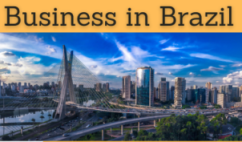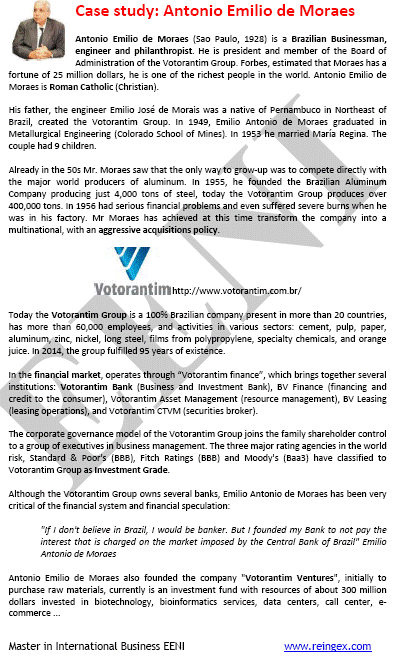Business in Acre, Amazonas, Roraima

Economic Profile, Northern Brazil, Rondonia, Río Branco, Manaus
- Economic Profile of the Northern region of Brazil
- State of Acre. Río Branco
- State of Amazonas. Manaus
- State of Roraima. Boa Vista
- State of Rondonia. Porto Velho
- State of Pará. Belén
- State of Amapá. Macapá
- State of Tocantins. Palmas

The Subject “Foreign Trade and Business in the Northern Region of Brazil” belongs to the following Online Programs taught by EENI Global Business School:
Doctorate: American Business, World Trade.


International Trade and Business in the Northern region of Brazil.
State of Acre
- The State of Acre has a population of 632,000 inhabitants and covers an area of 153,000 km², the capital Rio Branco, is located 3,000 kilometers from Brasilia
- Rio Branco concentrates the industrial activity
- The main economic activity is rubber extraction (50% of the production in the region)
- Wood is the main export product (85% of the total exports in the region)
State of Amazonas.
- Amazonas borders: Roraima, Pará, Mato Grosso, Rondonia, and Acre. Amazonas also, shares borders with Venezuela, Peru, and Colombia
- Area: 1.6 million km²
- Population: 3.3 million people
- The capital, Manaus, is the economic centre of the Northern region of Brazil
- Other main cities are Manacapuru, Tefé, Parintins, and Itacoatiara
- Manaus mainly exports rubber, Brazilian nuts, and wood. Its main economic activities include petrol refining, food industry, tourism, and chemicals
- The main imported products are electro-electronic goods, perfumes and cosmetics, textiles, computers, motorcycles, drinks, telephone, computer, and shipbuilding
- In 1967 it was established the Manaus Free Trade Zone, to create a development centre in the Amazonas region through the formation of an industrial park designed to transforming Manaus in the industrial, commercial and agricultural centre with economic conditions necessary to promote the foreign trade and the development in the region
State of Roraima
- The state of Roraima borders to the north with Venezuela, Guyana, Para and Amazonas
- Area: 225,116 km²
- Capital is Boa Vista
- Roraima has the smallest GDP among the Brazilian states, despite the high growth rates. Its GDP was R $ 4,889,000, constituting 0.15% of the Brazilian GDP, placing the State at the 27th Brazilian position
- The state of Roraima presented an annual growth of 7.65%, becoming the highest state of the economic growth in Northern Brazil
- Roraima has two Free-Trade Areas: In Bonfim and Boa Vista (import and export areas operating in special tax regime)
- The three main exported products by Roraima, were leather, with a share of 63.32%, wood (28.13%) and mineral water with 1%
- The three main products imported were the Portland cement, accounting for 35.43%, 11.20% glasses and wheat flour 9.32%
- Roraima has a small industrial park, located in Boa Vista, basically for refrigerants, dairy and cereal products production. São Paulo is the largest destination of these products, followed by the State of Amazonas and Venezuela
Havaianas (Paraiba)
It also seems that was the Zori, sandals Japan, the source of inspiration for the creation of Havaianas sandals on June 14, 1962. However, the Brazilian version featured a spread: they were made of rubber. A natural product, 100% nationally and that guarantee durable and comfortable shoes. Today; they are found worldwide and exported to the four corners of the planet. In Plant Havaianas in Campina Grande (Paraiba), are produced five pairs of Havaianas sandals per second, which gives 105 million pairs in a year. Since its launch, 2.2 billion pairs of Havaianas sandals were produced and sold. Aligned the feet in size 37, comes with fifty rounds of the circumference of the Earth. Every three Brazilians, two on average consume a pair of Havaianas per year.
(c) EENI Global Business School (1995-2024)
We do not use cookies
Top of this page



 +
+ 


